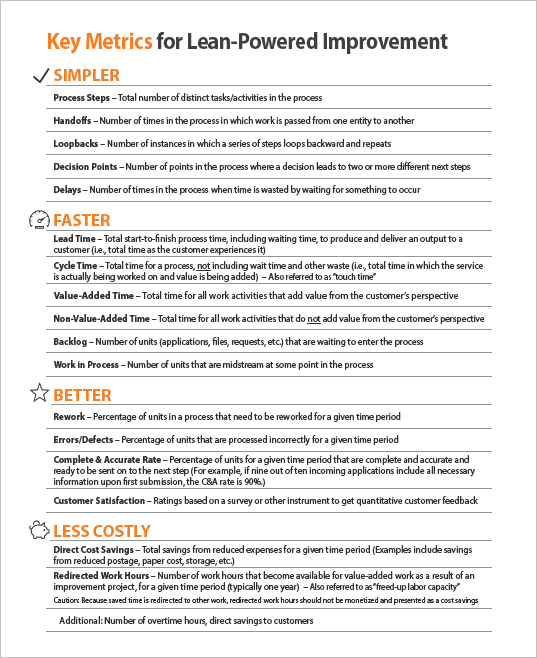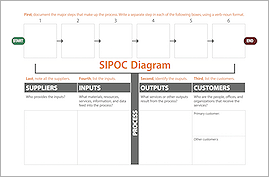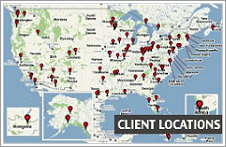You’ve come to the right place for buzzword-free info about work, workplaces, and workplace improvement. These posts are all about improving work processes, strengthening teamwork, sharpening management skills and leadership skills, improving communication, and more. This is info you can use right away, full of practical ideas in straight-talking plain English. Enjoy!
• Have a suggestion or question for a possible future post? Please let us know.
Speak the truth, because you can’t evade the radar

Did you know that you come fully equipped with your own radar? Each of your co-workers has one too. So do your customers.
Some people call it intuition. Others call it a gut feeling.
It detects things as they really are, alerting people whenever someone is giving them an incomplete or inaccurate version of the truth.
This internal radar is rarely fooled, so please take note:
If you’re planning to do some verbal gymnastics during your next team meeting to hide the fact that you’re late with an assignment, think twice. People will sense that you’re not playing straight.
If a co-worker asks for your feedback after doing an awful job, resist the urge to issue a fake “just fine.” Over time, false compliments get discovered, and your words will lose all weight. You can be candid and kind when giving feedback. If you don’t think you can, then bounce back the question and ask the asker how they think they did.
If you’re approaching a busy colleague to recruit them for your project team, and you’re tempted to downplay the amount of work that’s likely to be involved, don’t do it. Your would-be team member will pick up on it.
This radar is wired into us. Back in cave-dwelling days, people faced danger at every turn, so they had to assess, interpret, and respond all the time. Those who were best at this ended up living longer, sending an ever-stronger intuition up the generational line – all the way to us.
Think about your own internal radar. When someone tries to slide something past you, you usually catch on quickly, right?
Yes you do – and the same goes for just about everyone else.
Keep that in mind the next time you’re tempted to slip your message beneath the radar.
How a few key measures can fuel improvement
 |
Our lives are filled with measures, except when it comes to measuring the health of our business processes.
To monitor our physical health, we keep tabs on weight, blood pressure, cholesterol, and other indicators. With our favorite sports teams, we track rankings, batting averages, field goal percentages, and more. With our finances, we keep a watchful eye on our bank balances, interest rates, income, and expenses.
But at work, meaningful measures can be lacking – with people relying on intuition and instinct to tell how things are going.
This is especially the case when it comes to business processes. Staff (and even process owners) will offer opinions when asked about the current “health” of their process. But few will cite quantitative measures that reveal the real health with any precision.
This is a problem, but it’s mostly an opportunity for improvement.
When people learn about process-related measures, they start seeing the connections between different activities and functions.
And when a team begins to track several key measures over time, keeping those numbers front and center week after week, greater ownership takes hold. People start looking for ways to improve their process.
To help with this, we’ve packed our best measurement intelligence into a practical one-pager. It gives you a list of key process-related measures, with plain-language definitions for each. They’re sorted into four categories so you can see how the different measures relate.
You (and your colleagues) can use this one-pager right now. Decide on two or three high-priority measures for your process, gather baseline data, then gather new numbers at regular intervals so you can see trends. Use visuals (like bar charts) to add understanding and impact.
You’ll also use this one-pager when improving a process, whether it’s with a blitz approach like a Kaizen event, or a series of sessions over several weeks. Not all the measures will be relevant, but many will be. The team will want to gather baseline numbers reflecting the health of the current-state process – and put together a separate set of projected numbers to show the expected level of process fitness once the future-state process is in place. These projections serve as improvement targets going forward.
With their new numeric know-how, will staff start cheering on their processes like they cheer on their favorite sports teams?
We won’t go that far. But you can expect to see a better big-picture understanding among staff, more questions on how the process works, and greater interest in making the process simpler, faster, better, and less costly.
Those are some big gains from just a few meaningful measures.
![]() Download the 1-page handout (PDF 75KB)
Download the 1-page handout (PDF 75KB)
Don’t let big words bog down your communications

If you’re a fan of clear communication, the sign in this photo is going to bug you.
Look at those four words at the bottom: Wash produce before consumption.
Produce. Consumption. Really?
The sign-writer should’ve written the way people talk: Wash fruit before eating.
Now, it’s not a big deal when big words end up on store signs. But when they’re consistently used by organizations in their external and internal communications, they can confuse and frustrate and fail to get the intended point across.
Consider this paragraph from a government brochure on winter safety tips:
Timely preparation, including structural and non-structural mitigation measures to avoid the impacts of severe winter weather, can avert heavy personal, business and government expenditures. Experts agree that the following measures can be effective in dealing with the challenges of severe winter weather.
Fortunately, the agency rewrote this paragraph and the rest of the brochure. The new paragraph is concise and clear:
Severe winter weather can be extremely dangerous. Consider these safety tips to protect your property and yourself.
Want to bring new clarity to your own communications?
Here are tips we can all put to work, whether we’re writing a memo or revising a form or producing something bigger like an instruction guide or brochure:
- Before you write anything, get clear on the point you want to communicate.
- Use shorter words, sentences, and paragraphs. Click here for a massive list of recommendations.
- Write like you speak. Avoid jargon, legalese, and acronyms.
- With longer writing, use headings and lists. Organize the information so it’s easy to follow – by putting the most important info at the top, or by providing a sequenced list.
- Use active voice. No: When your application is received, you will be contacted by a customer service rep. Yes: A customer service rep will contact you when your application is received.
- Put your writing through this readability calculator. You’ll learn all sorts of things, including the grade level that’s needed for a reader to understand what you’re trying to say.
Are you sure you know your greatest strengths?

This should be easy: Name your top three or so greatest strengths.
Got ’em? Are you sure?
Are you really sure?
Most people think they know the standout strengths they bring to the workplace. But the truth is, most people never get a full and accurate accounting – and many people go through life never knowing the best of what they bring to the table.
Why? Because we’re too close to ourselves to be objective. Because we can be too humble. Because we might be a tad cynical. Because our strengths may have morphed into habits that we now take for granted. The reasons are many and varied.
So try something different.
Ask three or so co-workers what they see as your strengths.
You don’t need some special meeting for this. Keep it informal and just ask. You’ll be pleasantly surprised and thoroughly informed by their answers.
Will they think your inquiry is strange? Sure they will, at first.
But within five minutes, they’ll be asking you to tell them their strengths.
1-hour eye-opener: Use SIPOC to improve processes
 |
Don’t be turned off by the acronym. SIPOC works wonders when it comes to process improvement.
The SIPOC Diagram is a visual tool that conveys crucial information on a single page. It shows everything that goes on in a given business process.
If you’ve ever wanted staff to get a start-to-finish big-picture view of their work, here you go.
SIPOC (pronounced sigh-pock) stands for suppliers, inputs, process, outputs, and customers. All are identified when a SIPOC is created. It “makes visible” all the components and connections that end up producing an output and delivering value to customers.
That’s a lot of good information for a single one-pager.
But wait, it gets better! Click here to download our SIPOC in fillable/savable PDF format. Feel free to circulate it among colleagues, but most of all, put it to work with staff. The PDF includes tool tips for the various fill-in fields.
The SIPOC Diagram is often used when planning a big process improvement project. It gives a high-level understanding, and it can help a team sponsor right-size the project scope. Its structured nature ensures that sponsors and others think through every aspect.
It also works great as a stand-alone activity. Bring the concept to staff, and work together to talk through and identify all the components. Write on a flipchart or white board, using the one-pager as a guide – then enter the info into the one-pager so everyone can get a clean copy.
Believe it: This quick activity is an eye-opener. People typically focus on their own work. SIPOC widens their vision so they see and appreciate all the moving parts.
Expect to hear comments like: “So that’s what happens before my part of the process!” “That explains why we have those delays.” “This whole thing could be a lot simpler.”
You’ll also hear questions: “Why are we using that supplier?” “What happens when those forms come in with errors?” “Do we really need that check phase?”
In other words, SIPOC prompts discovery and curiosity. Staff begin to lean forward, looking for ways to improve their process.
Can SIPOC-powered conversation be the starting point for a process improvement project? Can it raise curiosity to the point where people do additional fact-finding and analysis in order to get smarter about their process? Can it uncover some “just do it” improvements that get implemented right away. Yes, yes, and yes.
Now that’s one magical one-pager.
![]() Download the 1-page SIPOC handout (PDF 120KB – Fillable/Savable)
Download the 1-page SIPOC handout (PDF 120KB – Fillable/Savable)




